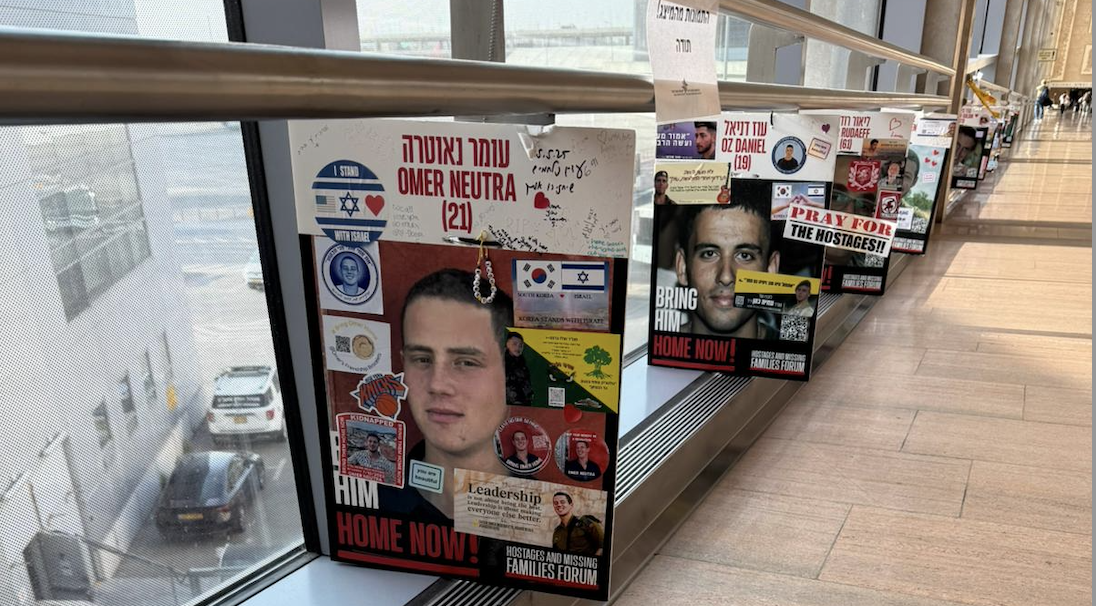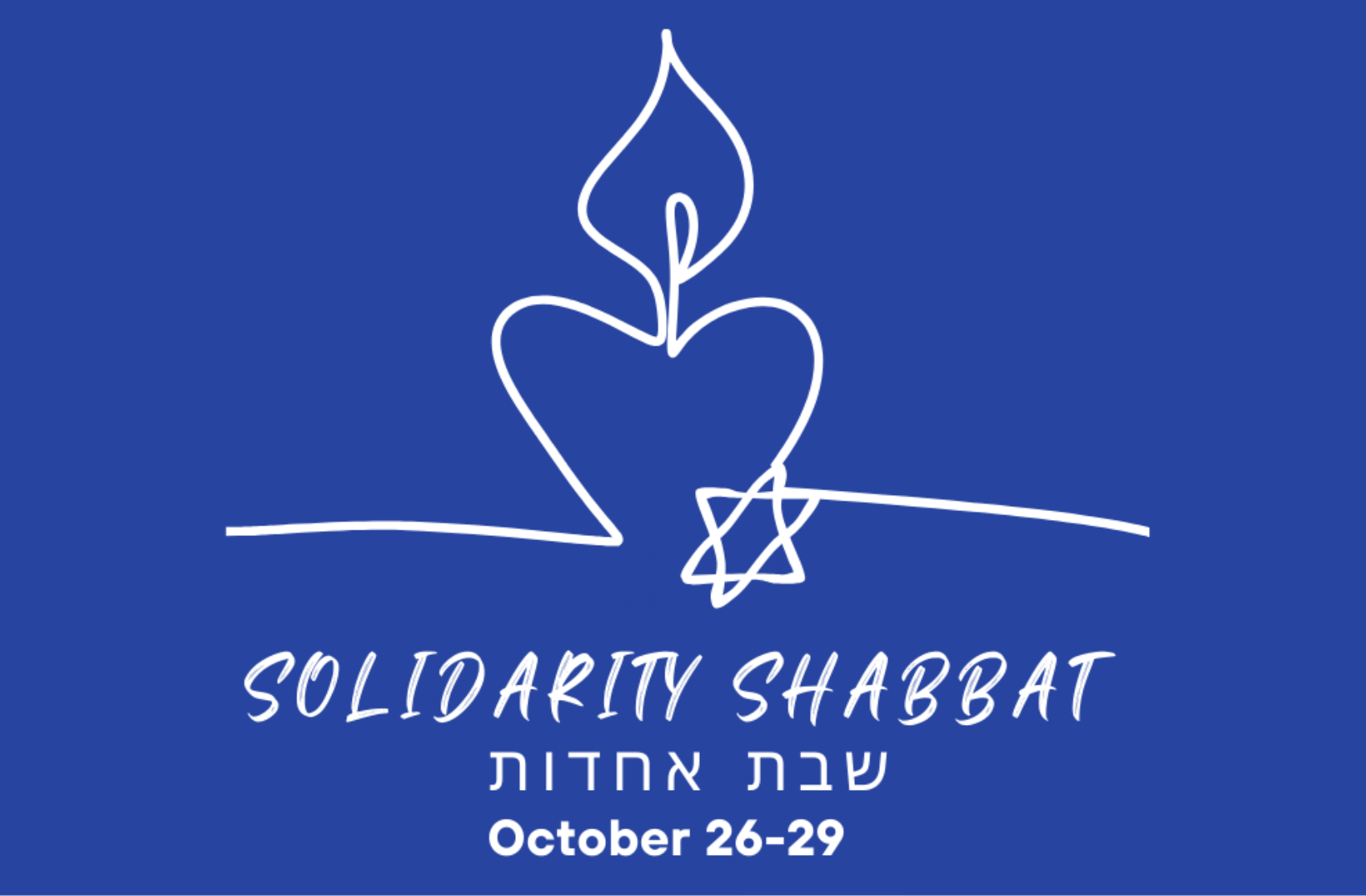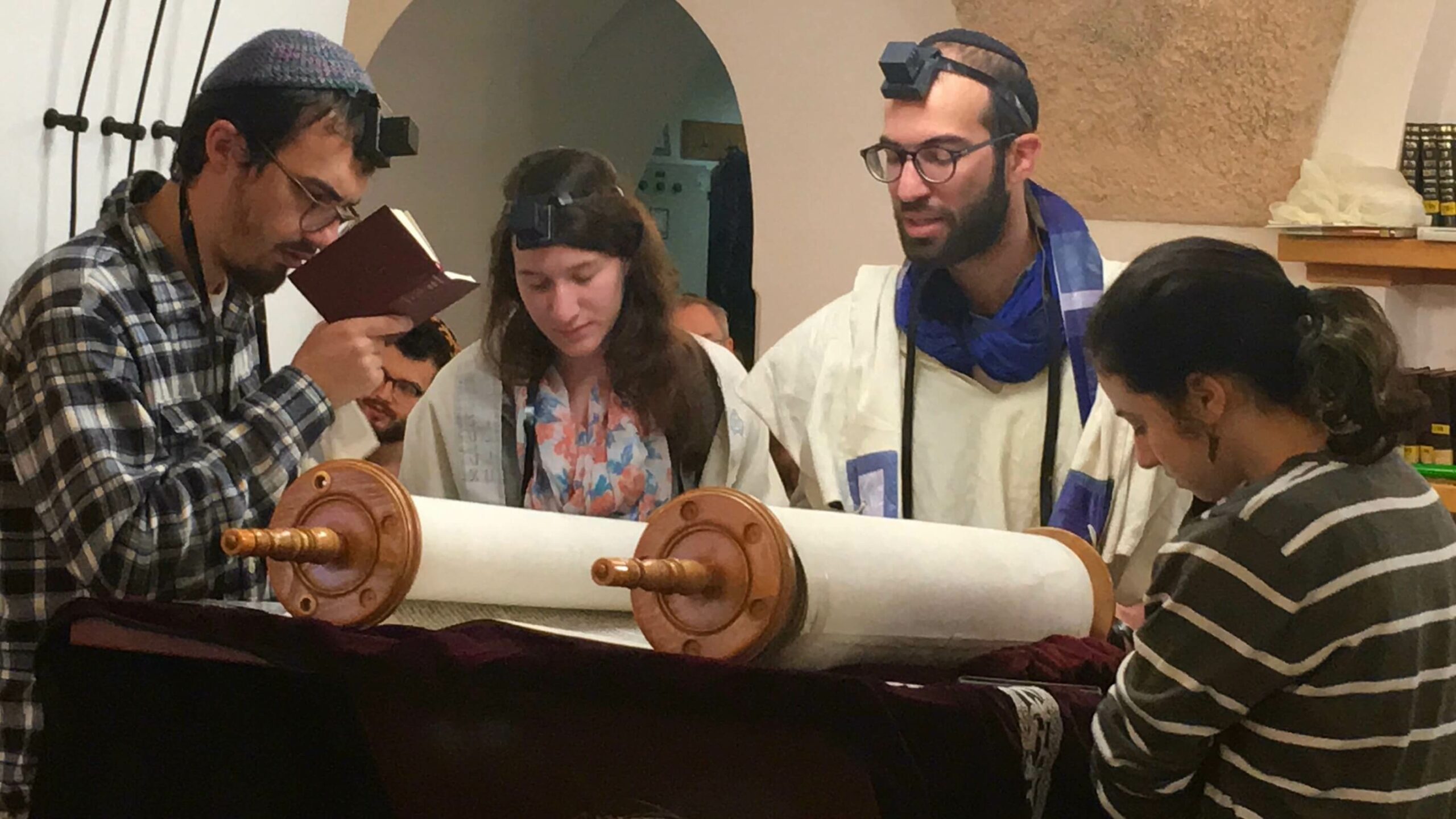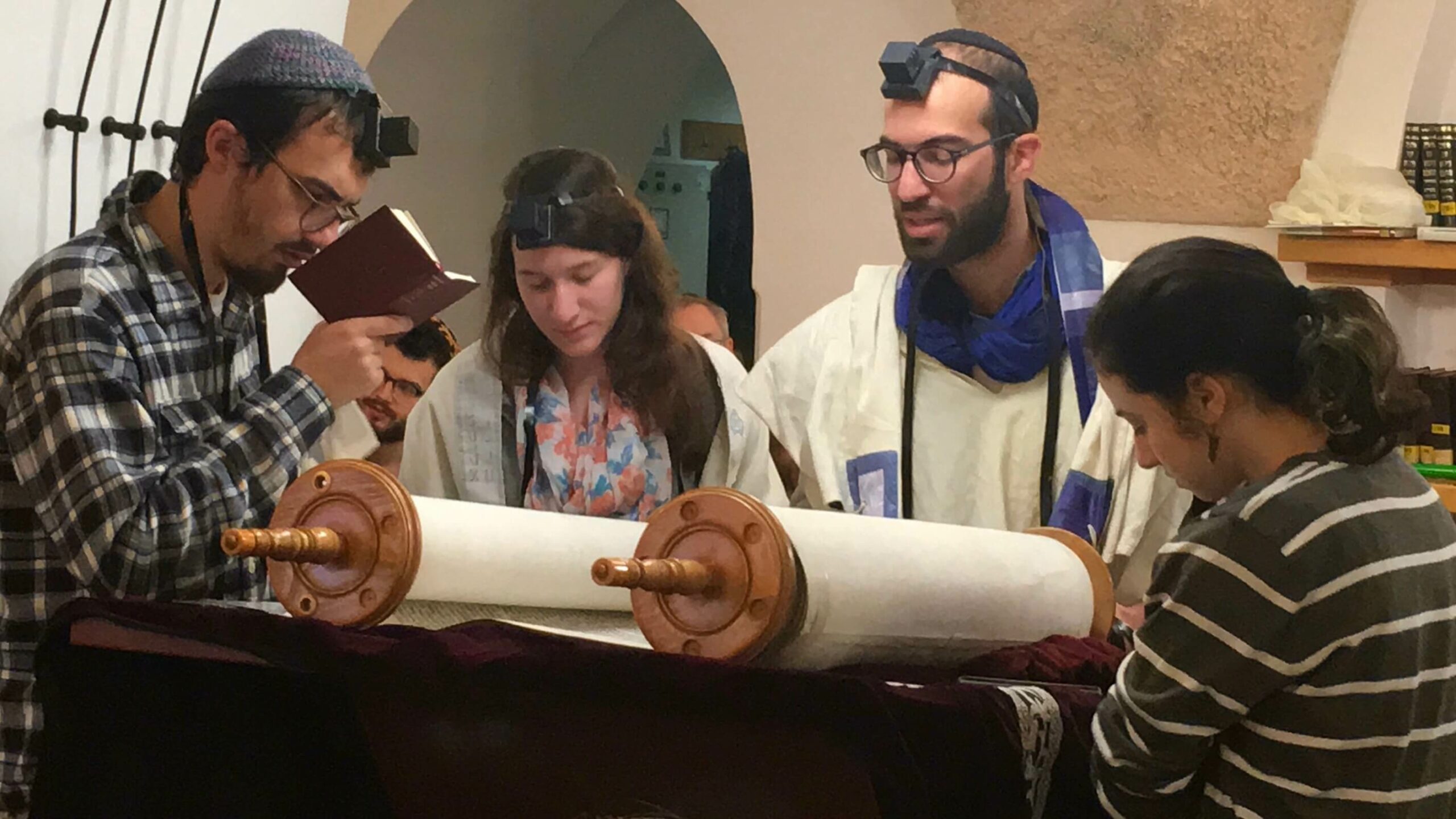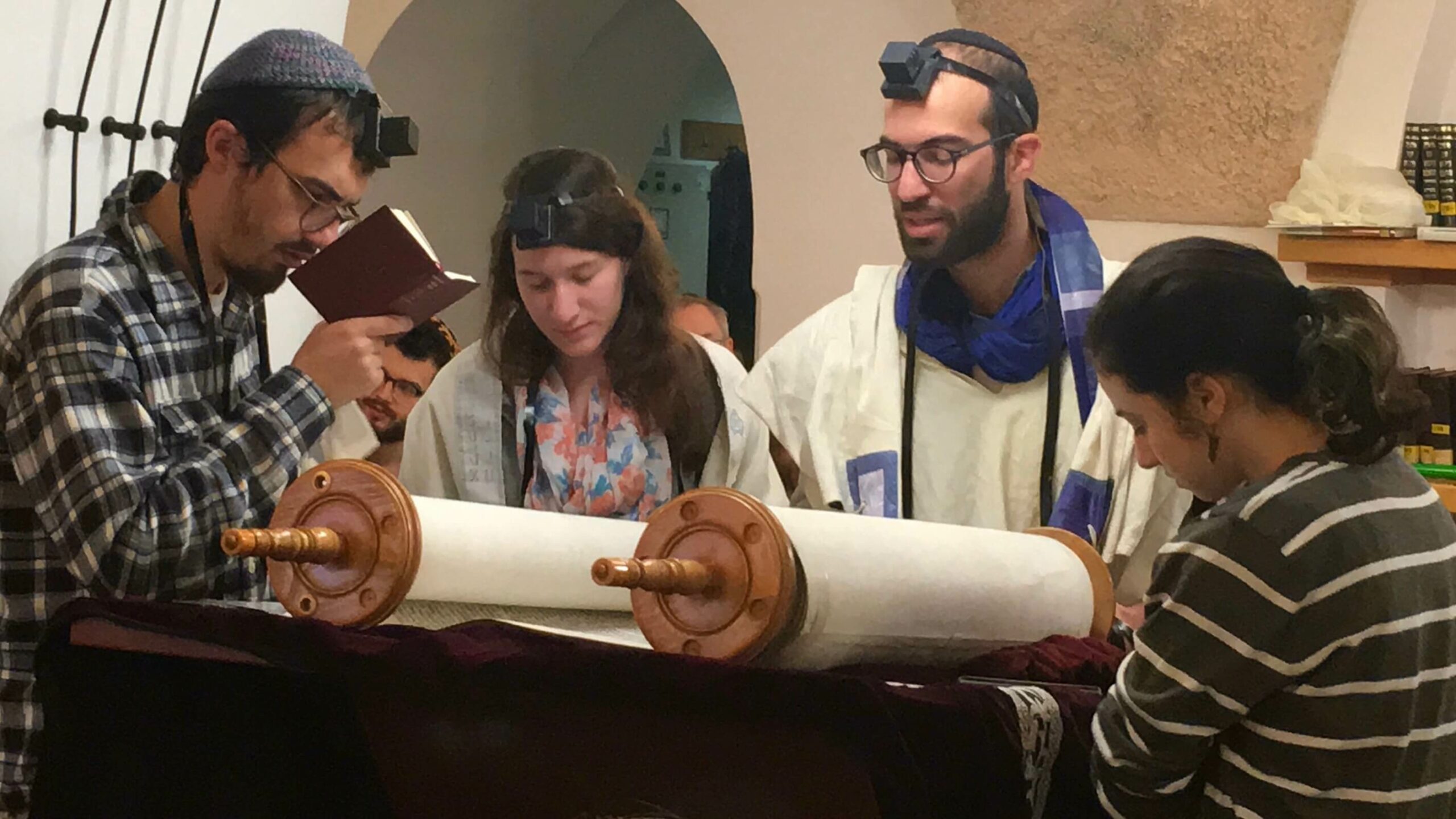

TORAH SPARKS (print friendly version)
Parashat Beha’alotekha
June 2, 2018 | 19 Sivan 5778
Annual | Numbers 8:1-12:16 (Etz Hayim p. 816-835; Hertz p. 605-619)
Triennial | Numbers 9:15-10:34 (Etz Hayim p. 821-826; Hertz p. 609-613)
Haftarah | Zechariah 2:14-4:7 (Etz Hayim p. 836-839; Hertz p. 620-622)
D’var Torah: Real Unity, Real Inclusion
Rabbi Andy Shapiro Katz, Director of Engagement, Conservative Yeshiva
The process of building the Mishkan and setting up the Israelite camp comes to a close with Parashat Beha’alotekha, whose first three stories deal with questions of unity and difference, inclusion and exclusion.
It opens with God telling Moshe about how Aharon is to light the 7-branched Menorah. But then in verse 8:4, seemingly out of the blue, we are told: “Now THIS is how the Menorah was made: it was hammered work of gold, hammered from base to petal.” But we already knew this from the detailed plans for the Menorah given in Shemot (Exodus)! What does this add and why is it here?
The Sifrei, an early collection of Midrash on Bamidbar (Numbers), notes the odd use of the word “Zeh/This” in 8:4 and explains that despite the detailed plans, Moshe was still confused about how the Menorah should look. In response, God pointed to an image of it and said “ZEH” – THIS is how should make it. With this, Moshe finally understood, as we see from the rest of 8:4: “According to the pattern that the LORD had shown Moshe, so was the Menorah made.”
The Torah and the Midrash seem to be emphasizing a point. Despite its distinct parts with their different functions, the Menorah was a single unit made from the same valuable substance. Distinctions, but no hierarchy. Differences, but no disunity. It is as if they want us to have this in mind when reading the next piece of the parasha about the consecration of the Levites for Mishkan service.
The Tribe of Levi occupies a strange position. As we see in Shemot 28, the Kohen Gadol’s breastplate had 12 inlaid gemstones, one for each tribe, with Levi explicitly mentioned as one of the 12. And yet, here in Bamidbar when the tribes are counted, the tribe of Joseph is counted as two – Ephraim and Manasseh – and Levi isn’t counted at all. Instead, Levi is given a special role in the Mishkan and a central location in the camp. But lest one learn from this that the Levites are a separate entity, either above or below the rest of the Israelites, the Menorah reminds us that even when something has distinct parts that look different or perform special functions – they are still part of a unified whole.
But the rubber meets the road, so to speak, in the next piece of the parasha – that of Pesach Sheni. Everyone (or so we think) does as Moshe commands, making the Pesach sacrifice on the one year anniversary of their redemption from Egypt. But suddenly we learn of a group that, having become ritually impure through contact with a dead body, was barred from offering the sacrifice. They turn to Moshe and say, essentially: What about us?
Moshe could have said: Don’t make such a big deal of it; next year you’ll have another chance. But instead he hears their pain at being excluded and turns to God for the answer. On the flipside, God could have said: The Pesach sacrifice is so important that ritual impurity doesn’t matter; let everyone offer it. But instead, God maintains the distinction and finds a way to overcome it. Those ritually impure on Pesach will have Pesach Sheni one month later – a day on which they can perform the sacrifice just as it had been done by everyone else one month earlier.
We see from this that inclusion is not only about the privilege to perform a meaningful ritual – it is ALSO about the responsibility to do it, and do it right. So even though Pesach Sheni isn’t “really” Pesach, God requires the same strictures be observed. And lest one think that anyone can get this second chance, God makes clear that one who COULD perform the Korban Pesach at the preferred time, but chooses not to, is NOT included in Pesach Sheni. In fact, they “bear their guilt” and are to be “cut off from their kin!” The message is clear: include those who, despite their different circumstances, want both the privilege AND the responsibility of being included, but exclude those who, by dishonoring their privilege and shirking their responsibility, exclude themselves.
Pesach Sheni’s radical vision bases inclusion on active participation and responsibility, not ethnicity and personal history. All can participate in the unifying act of the Pesach sacrifice, even those neither present for the redemption, nor descended from those who were. God drives this home in verse 9:14 with perhaps the most Jewish expression of inclusion and unity: “There shall be one law for you, whether stranger or citizen of the country.”
May we continue to strive to realize this vision, not only where we are strangers, but also where we are citizens, not only in countries where we are the minority, but also where we are the majority. Shabbat Shalom.
Parashat Beha’alotekha Self-Study
Vered Hollander-Goldfarb, Conservative Yeshiva Faculty
In this Parasha we feel that we are in the desert, touching on the end of the Mishkan narratives on one hand, and the preparations for going into the land on the other.
1) We open with the instructions to Aaron: He is to light the Menorah (candelabra) in the Mishkan (8:1-4). In a curious step, the Torah not only gives instructions, but tells us about the design of the Menorah, which was very complicated. Why do you think that the Torah tells us this? How did Moshe know how to do?
2) The people are preparing to celebrate their first Pessach (Passover) commemorating leaving Egypt a year earlier (9:1-14). Let’s stop and think: How might they feel at this point in time?
3) How did the people know how to travel in the desert (9:15-23)? What do you think are the benefits and the difficulties of being reliant on the cloud to know when (as well as where) to travel?
4) The cloud guided the way in the desert. But in 10:33 we are told that the Ark traveled before the people. What was the message to the people? When the Ark traveled, Moshe had something to say. What was it (10:35-36)? When do we say these lines?
5) After they begin to travel, the people begin to complain (11:4-10). What are they complaining about? Is their complaint justified? Explain.
D’var Haftarah: Hope Amidst Despair
Rabbi Mordechai Silverstein, Conservative Yeshiva Faculty
Zechariah was a prophet of visions. Angels presented him with symbolic images, asking him to interpret them. Generally, he was baffled by the vision’s significance until the angel explained it to him. In the last of the visions in this week’s haftarah, Zechariah is symbolically awakened by an angel: “The angel who talked with me came back and woke me as a man is woken from sleep. He said to me: ‘What do you see?’ And I answered: ‘I see a menorah all of gold, with a bowl above it. The lamps on it are seven in number, and the bowls above it have seven pipes; and by it are two olive trees, one on the right of the bowl and one on the left.’ I, in turn, asked the angel who talked with me: ‘What do these things mean, my lord?’ ‘Do you not know what these things mean?’ asked the angel who talked with me; and I said: ‘No, my lord.’ Then he explained to me as follows: ‘This is the word of the Lord to Zerubbabel: ‘Not by might, nor by power, but by My spirit’ said the Lord of Hosts.’” (4:2-6)
Zechariah’s generation was confronted by a quandary. They had just returned from the Babylonian exile after seventy years. Life was rough. There were great debates over the community’s priorities and there was a lot of insecurity. Rabbi Yosef Kara, a younger contemporary of Rashi (12th century France), clues us in on what this vision may be about: “Initially when the work of rebuilding the Temple had ceased, there was despair of [ever rebuilding it], since there were those who contended that it should not be rebuilt, [as we learn from Zechariah’s contemporary, the prophet] Haggai: ‘[Thus said the Lord of Hosts: There are people who say: The time has not come for the rebuilding of the House of the Lord.] And the word of the Lord through the prophet Haggai continued: Is it a time for you to dwell in your paneled houses, while this House lies in ruins?” (Haggai 1:3-4) The angel came to Zechariah to awaken us from our sleep, that we should no longer despair [rebuilding it]…” We learn from this that people were unsure about how to shape their future and where to turn for answers.
When things get tough, it is easy to become despondent and to sink into incapacitating despair. For Zechariah’s generation that meant that Shivat Zion (the return from exile) might never have rebuilt the Second Temple community. In our days, it could mean the Jewish communities of the diaspora succumbing to the forces that pull people away from Jewish faith and life. In Israel, it could mean being overwhelmed by all the naysayers who come to undermine the great Jewish experiment in controlling our own fate as a people.
The angel has an important message for those who would give in to despair and lose the optimism necessary to carry on: “Not by might, nor by power, but by My (God’s) spirit’ said the Lord of Hosts”. Faith in God will carry us through.

